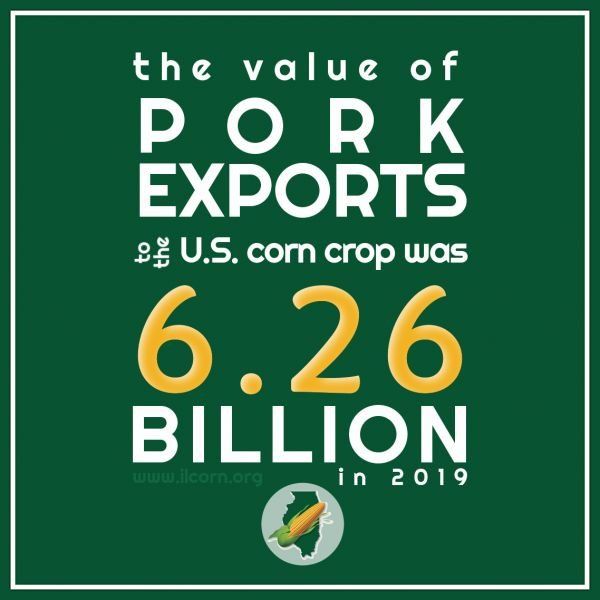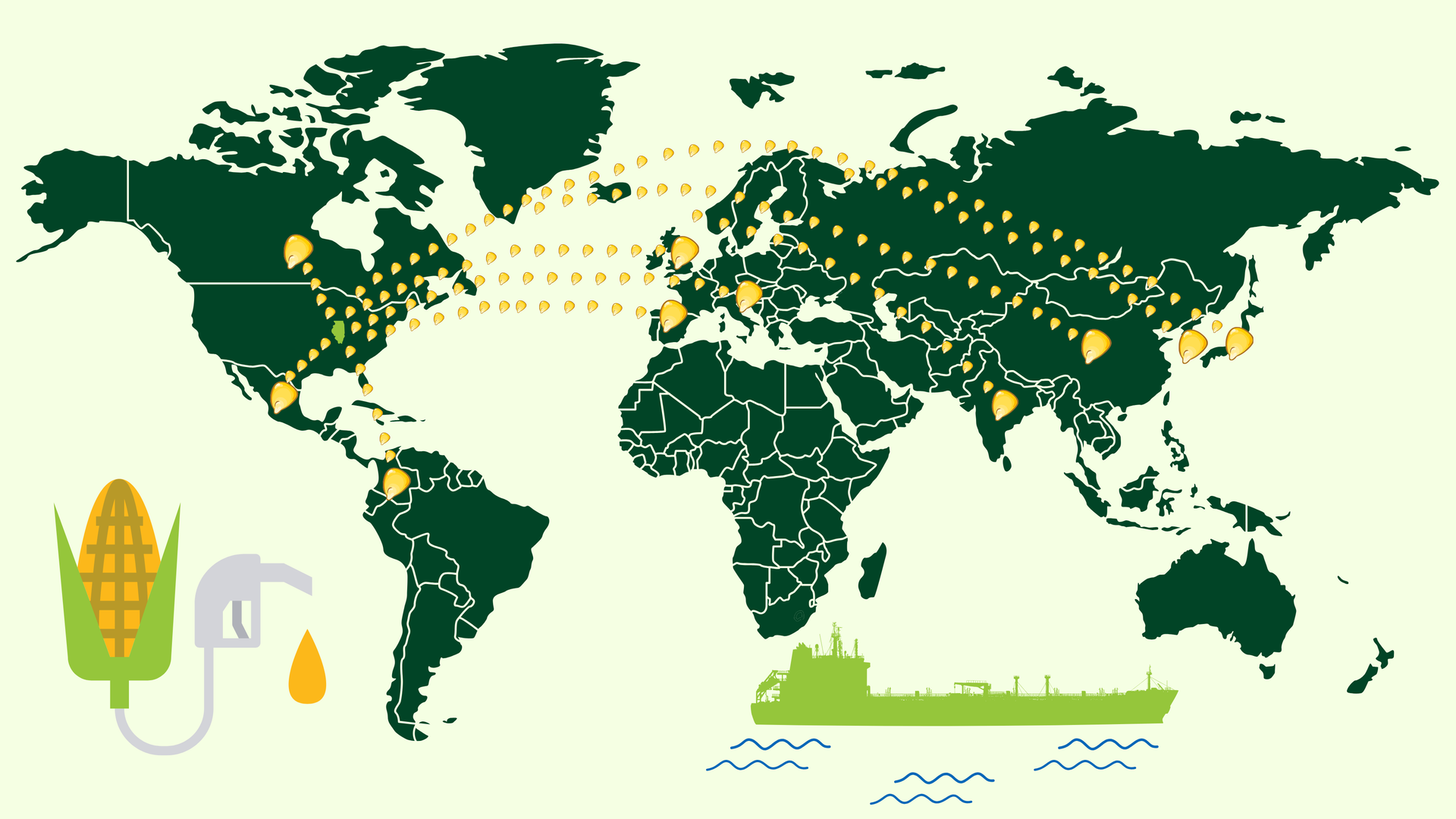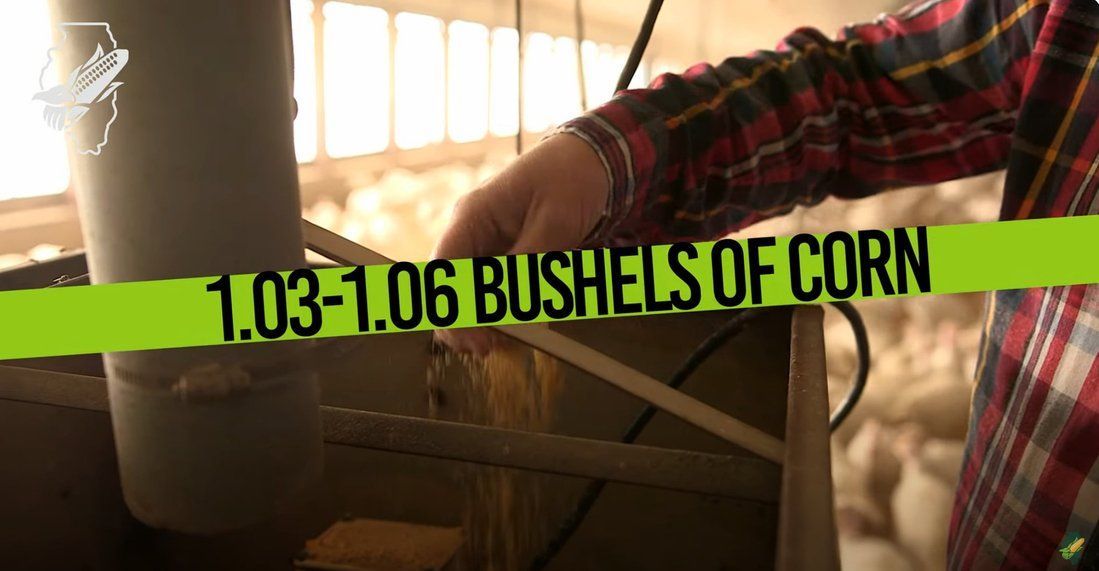Study Quantifies Value of Red Meat Exports to U.S. Corn

Since 2015, pork and beef exports have been the fastest-growing category of corn use, delivering critical returns for corn farmers. The Illinois corn checkoff supports the international promotion of U.S. beef, pork and lamb by investing dollars in market development efforts conducted by the U.S. Meat Export Federation (USMEF).
USMEF has released an updated version of the independent study aimed at quantifying the value red meat exports provide to U.S. corn and soybean farmers. The original study was conducted in 2016 with updates also released in 2018 and 2019. Key findings from the latest version, which utilizes 2019 export data, include:
Value of Red Meat Exports’ Feed Use of Corn
- In 2019, U.S. beef and pork exports used 480 million bushels of corn. Corn revenue generated by pork exports totaled $1.8 billion (480 million bushels x average annual price of $3.75/bushel).
- Beef and pork exports also used about 3 million tons of distiller’s dried grains with solubles (DDGS) in 2019 at an annual average price of $137/ton. This generated $411.8 million in revenue for ethanol mills’ co-products.
Value to U.S. Corn Crop from Red Meat Exports
- In 2019, beef and pork exports contributed more than 12% of the per bushel price of corn ($0.46/bushel) of an annual average price of $3.75/bushel.
- With total production of 13.62 billion bushels, the value of pork exports to the U.S. corn crop was $6.26 billion.
USMEF President and CEO Dan Halstrom said quantifying the value delivered by beef and pork exports is reassuring to corn farmers, who provide critical support for USMEF’s efforts to expand global demand for U.S. red meat.
“These are challenging times for everyone in U.S. agriculture, with producers facing difficult choices every day,” Halstrom said. “USMEF greatly appreciates the foresight and confidence shown by the corn and soybean sectors when they invest in red meat exports, and this study provides a detailed analysis of the value delivered by that investment.”











































































































